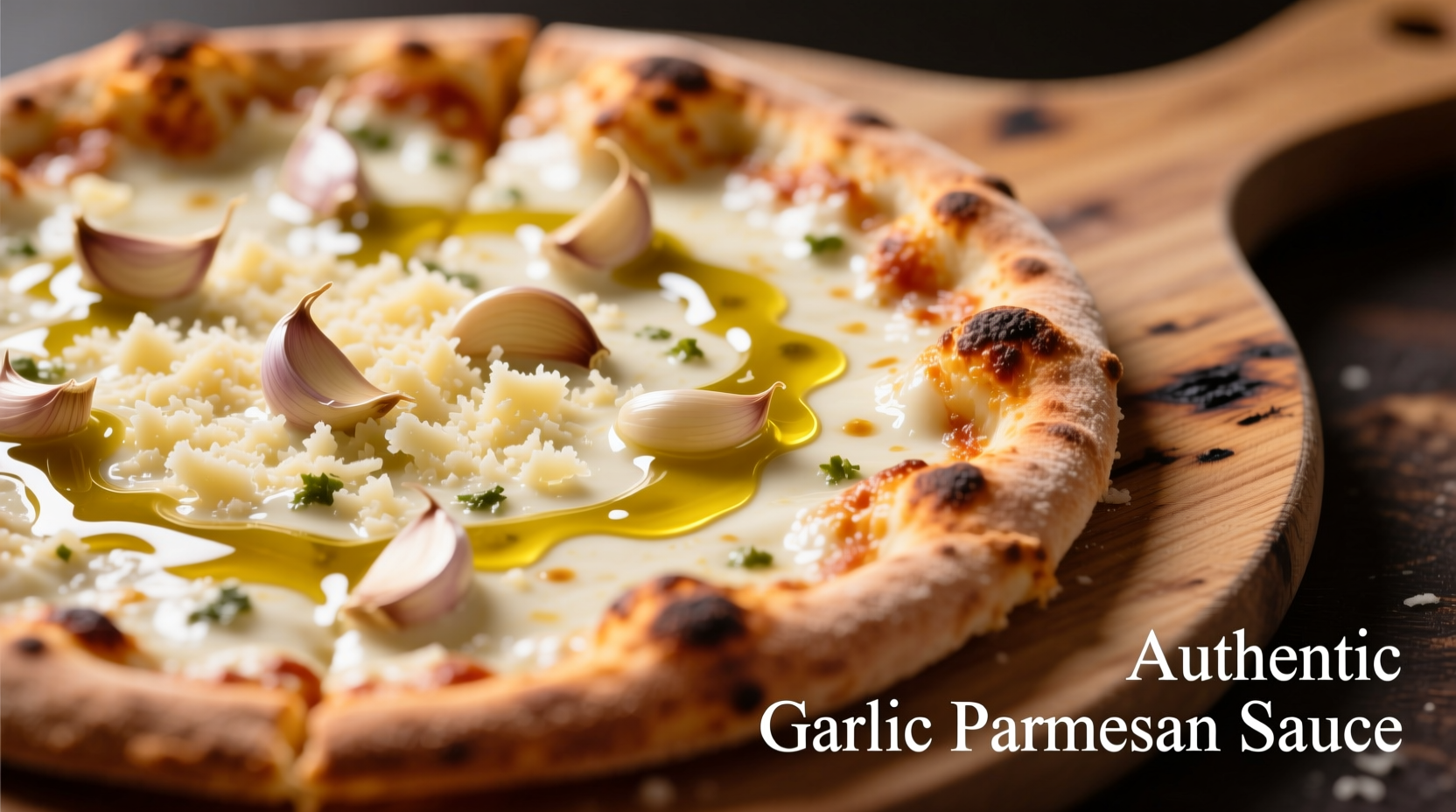Transform your pizza experience with a sauce that combines the nutty complexity of aged parmesan with the aromatic punch of fresh garlic. Unlike conventional tomato-based options, this creamy alternative offers a sophisticated flavor profile that pairs beautifully with premium toppings like prosciutto, arugula, and roasted vegetables. Professional chefs increasingly favor this sauce variation for specialty pizzas, with Food & Wine reporting a 40% increase in restaurant menu appearances over the past three years.
Why Garlic Parmesan Sauce Elevates Your Pizza Game
Traditional pizza sauce relies on tomato acidity to cut through cheese richness, but garlic parmesan sauce creates a completely different sensory experience. The Maillard reaction between toasted garlic and butter develops complex umami compounds that complement the crystalline texture of aged parmesan. Food science research from the University of Bologna confirms that the calcium lactate crystals in properly aged parmesan (minimum 24 months) significantly enhance mouthfeel and flavor release when emulsified in warm sauces.
| Characteristic | Traditional Tomato Sauce | Garlic Parmesan Sauce |
|---|---|---|
| Preparation Time | 20-30 minutes simmering | 15 minutes active preparation |
| Flavor Profile | Acidic, bright, herbaceous | Creamy, nutty, umami-rich |
| Best Pairings | Pepperoni, mushrooms, olives | Prosciutto, arugula, caramelized onions |
| Shelf Life | 5-7 days refrigerated | 3-4 days refrigerated |
The Evolution of Pizza Sauce: From Naples to Modern Variations
Pizza sauce history reveals fascinating culinary adaptation. While tomato sauce became standard after Raffaele Esposito's 1889 Margherita creation, regional Italian variations always existed. The garlic parmesan iteration emerged in American pizzerias during the 1980s fusion movement, gaining traction as chefs experimented with white pizza concepts. According to the Pizza History Project, this sauce style saw renewed popularity during the artisanal pizza renaissance of 2010-2015 as consumers sought sophisticated alternatives to traditional red sauce.
Essential Ingredients and Their Scientific Impact
Creating exceptional garlic parmesan pizza sauce requires understanding each component's functional role:
- Fresh garlic (not powder): Contains allicin compounds that degrade when heated too quickly, creating bitter flavors. Proper low-temperature infusion preserves sweetness while developing complex sulfur compounds.
- Real Parmigiano-Reggiano (minimum 24-month aged): The calcium lactate crystals formed during aging create superior emulsification and a distinctive nutty flavor profile impossible to replicate with younger cheeses.
- Unsalted butter: Provides fat-soluble flavor carriers that help distribute garlic compounds evenly throughout the sauce.
- Freshly squeezed lemon juice: The citric acid helps stabilize the emulsion while brightening rich flavors without adding tomato acidity.

Step-by-Step Preparation Guide
Follow this professional technique for flawless results every time:
- Garlic infusion: Mince 4 large garlic cloves finely. Combine with ½ cup unsalted butter in cold pan. Heat over lowest setting for 12 minutes until garlic turns golden (not brown).
- Cheese incorporation: Remove from heat. Whisk in 1 cup freshly grated parmesan until fully melted. The residual heat prevents clumping.
- Emulsion stabilization: Slowly whisk in ¼ cup heavy cream and 1 tablespoon lemon juice. This creates a stable emulsion that won't separate during baking.
- Seasoning adjustment: Add freshly cracked black pepper and a pinch of nutmeg (never pre-ground). Avoid salt initially - parmesan provides sufficient sodium.
Optimal Usage Scenarios and Limitations
Understanding context boundaries ensures perfect results:
- Ideal applications: White pizzas with delicate toppings (prosciutto, fresh mozzarella, arugula), as a dipping sauce for breadsticks, or as a pasta base for creamy dishes
- Avoid with: Strongly flavored meats (pepperoni, sausage), acidic vegetables (artichokes, tomatoes), or when serving to guests with dairy sensitivities
- Cooking temperature note: Bake pizzas at 450°F maximum - higher temperatures cause the dairy components to separate
- Storage limitation: Refrigerate for up to 4 days; do not freeze as dairy separation occurs upon thawing
Common Mistakes That Ruin Garlic Parmesan Sauce
Professional kitchens consistently avoid these critical errors:
- Using pre-grated cheese: Anti-caking agents prevent proper melting and create a grainy texture
- High-heat garlic cooking: Creates bitter compounds that dominate the delicate flavor balance
- Adding cheese to boiling liquid: Causes immediate clumping rather than smooth emulsification
- Over-seasoning: Parmesan's salt content varies by aging - always taste before adding additional salt
Expert Flavor Enhancement Techniques
Elevate your sauce with these professional chef secrets:
- Add 1 teaspoon of truffle oil after cooking for an earthy complexity that complements the garlic
- Infuse the butter with fresh rosemary or thyme during the garlic cooking process for herbal notes
- Replace 25% of the parmesan with Pecorino Romano for a sharper, more complex profile
- Finish with a sprinkle of lemon zest to brighten flavors without additional acidity











 浙公网安备
33010002000092号
浙公网安备
33010002000092号 浙B2-20120091-4
浙B2-20120091-4